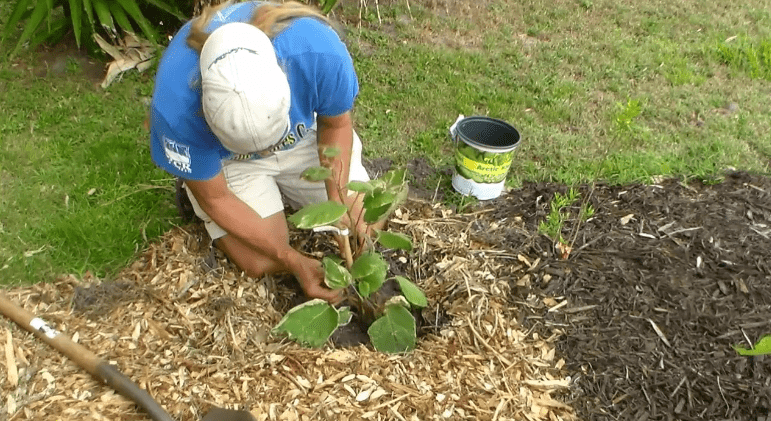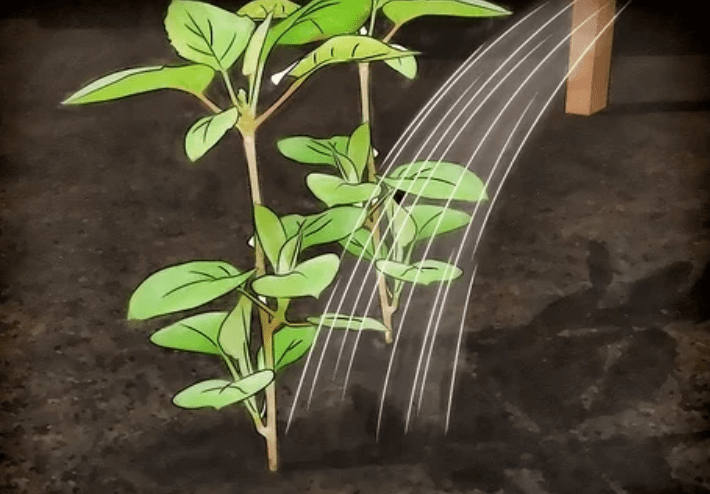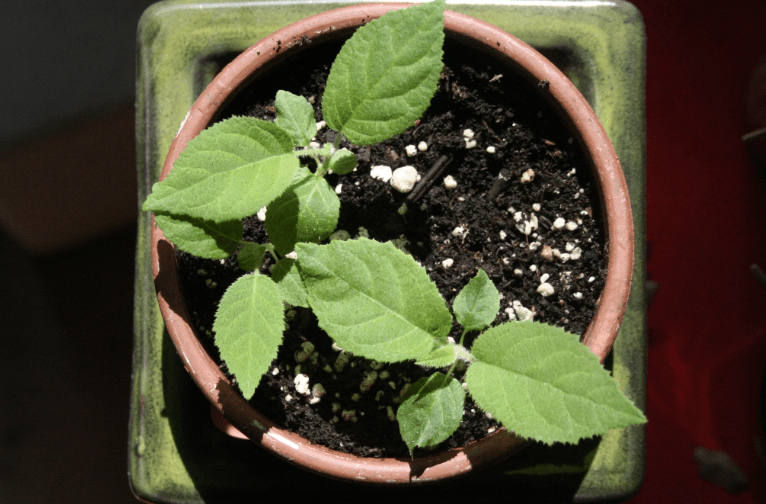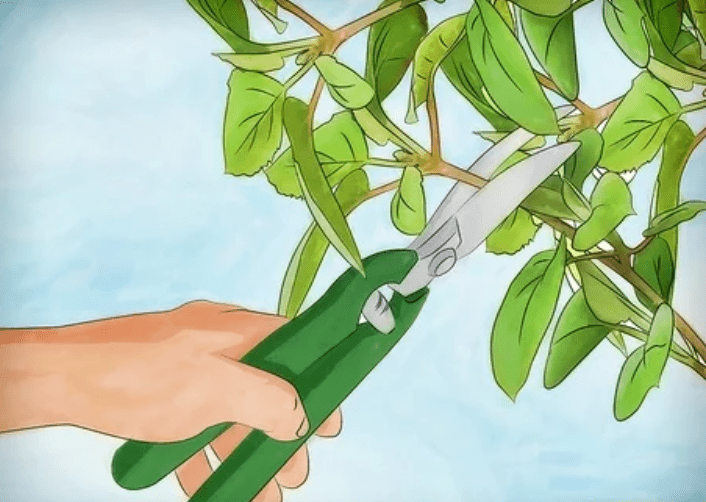
Purple Kiwi Tree: A Vibrant Addition to Your Garden
Are you tired of the same old, boring garden? Looking to add some vibrancy and uniqueness to your outdoor space? Look no further than the purple kiwi tree! Not only does it add a pop of color to your garden, but it also provides you with delicious, nutrient-rich fruit. In this post, we’ll discuss the beauty and benefits of adding a purple kiwi tree to your garden, and why it’s a must-have addition for any gardening enthusiast. Don’t miss out on the opportunity to enhance the visual appeal of your outdoor space and enjoy the fruits of your labor—literally!
Table of Contents
ToggleUnderstanding the Purple Kiwi Tree
A. Botanical Classification
The purple kiwi tree, also known as Actinidia kolomikta, is a beautiful and exotic addition to any garden. Its stunning purple and green variegated leaves make it a standout feature in any landscape. Not only is it visually striking, but it also produces delicious, sweet-tasting kiwi fruits that are packed with essential vitamins and nutrients.
B. Origin and History
Originally hailing from the forests of Eastern Russia, the purple kiwi tree has a rich history of being cultivated for both its ornamental beauty and its bountiful harvest of kiwi fruits. It has been treasured for centuries in Asia for its medicinal properties and has now become a sought-after addition to gardens around the world.
C. Unique Characteristics
The purple kiwi tree is not your average fruit-bearing tree. Its unique variegated leaves add a touch of elegance to any outdoor space, and its ability to produce an abundance of sweet, nutritious kiwi fruits makes it a valuable addition to any garden. Its rich history and exotic origins only add to its allure, making it a truly one-of-a-kind botanical specimen. If you’re looking to add a striking and productive element to your garden, the purple kiwi tree is the perfect choice.
Benefits of Growing a Purple Kiwi Tree
A. Aesthetic Appeal
The purple kiwi tree is a stunning addition to any garden, with its variegated leaves adding a touch of elegance and beauty to the landscape. Its unique appearance will undoubtedly attract attention and become a conversation piece among visitors. Plus, the abundance of sweet, nutritious kiwi fruits it produces adds to its appeal, making it both visually striking and productive. With its rich history and exotic origins, the purple kiwi tree is the perfect choice for those looking to add a touch of luxury and beauty to their outdoor space. Don’t miss out on the opportunity to elevate your garden with the unique aesthetic appeal of the purple kiwi tree.
B. Nutritional Value
Not only does the purple kiwi tree bring beauty to your garden, but it also provides a plethora of health benefits. Kiwi fruits are packed with essential vitamins and minerals, including Vitamin C, Vitamin K, and dietary fiber. They are also known for their high antioxidant content, which can help boost your immune system and protect against various diseases. By growing a purple kiwi tree in your garden, you can have a convenient and delicious source of these nutritious fruits right at your fingertips. Incorporating fresh kiwi into your diet can help improve digestion, support heart health, and enhance overall well-being. With the purple kiwi tree, you can easily access these nutritional benefits and contribute to a healthier lifestyle for yourself and your family. Don’t miss out on the opportunity to grow a tree that not only looks beautiful but also provides a bounty of health-boosting fruits.
C. Environmental Impact
Growing a purple kiwi tree in your garden is not only a great way to have a convenient and delicious source of nutritious fruits, but it also has a positive environmental impact. By growing your own fruits, you are reducing the need for transportation and packaging, which helps to lower your carbon footprint. Additionally, kiwi trees are low-maintenance and can thrive in various climates, making them a sustainable and eco-friendly addition to your garden. So not only will you be benefiting your health by incorporating fresh kiwi into your diet, but you will also be contributing to a healthier planet. Don’t miss out on the opportunity to make a positive impact on both your health and the environment by growing a purple kiwi tree in your garden.
How to Grow a Purple Kiwi Tree
A. Selecting the Right Location
1. Climate requirements
Choose a location with mild to warm temperatures, as kiwi trees thrive in zones 7-9. Avoid areas with extreme cold or hot temperatures. Sunlight needs- Kiwi trees thrive in full sun, so choose a location with at least 6-8 hours of direct sunlight per day.
2. Soil preferences
Kiwi trees prefer well-drained, fertile soil with a pH level of 6.0-6.5. Avoid planting in heavy clay or waterlogged soil, as this can lead to root rot. Consider adding organic matter, such as compost, to improve soil texture and fertility.
B. Planting Process
Once you have selected the right location, it’s time to plant the purple kiwi tree. When planting, ensure that the hole is twice as wide and deep as the root ball. Gently remove the tree from its container and loosen the roots before placing it in the hole. Backfill the hole with soil, firming it around the tree to remove air pockets. Water the tree thoroughly after planting to help settle the soil.
By following these planting tips, you can enhance the visual appeal of your outdoor space and enjoy the delicious, nutritious fruit that a purple kiwi tree provides. Happy planting.

Caring for Your Purple Kiwi Tree
A. Watering schedule
It’s essential to establish a regular watering schedule for your new purple kiwi tree. Water deeply and thoroughly, ensuring that the soil is consistently moist but not waterlogged. Pay close attention to weather conditions and adjust your watering routine accordingly, especially during hot, dry periods. By providing your tree with adequate hydration, you are promoting healthy root growth and overall plant vitality. Remember, a well-hydrated tree is a happy and productive tree. So, make sure to prioritize watering as a crucial aspect of caring for your purple kiwi tree. Your efforts will be rewarded with beautiful, vibrant foliage and abundant, delicious fruit.

B. Fertilization needs
Fertilization is just as essential as proper watering when it comes to caring for your purple kiwi tree. By providing your tree with the right balance of nutrients, you are ensuring that it has the energy and resources it needs to thrive and produce an abundance of delicious fruit.
Be sure to feed your purple kiwi tree with a balanced fertilizer that contains nitrogen, phosphorus, and potassium. This will help to promote healthy growth, strong root development, and robust fruit production. It’s important to follow the recommended application rates and timing for your specific variety of kiwi tree, so be sure to do your research or consult with a horticultural expert for guidance.
Fertilize your tree in the early spring before new growth begins, and again in the summer to support the development of fruit. By providing your purple kiwi tree with the nutrients it needs, you are investing in its long-term health and productivity.
So, don’t overlook the importance of fertilization in your purple kiwi tree care routine. Your efforts will be rewarded with a bountiful harvest and a happy, thriving tree.

C. Pruning techniques
Pruning techniques are also essential for promoting healthy growth and fruit production in your purple kiwi tree. Regular pruning helps to maintain the shape of the tree, improve air circulation, and encourage the growth of new fruit-bearing wood. Be sure to remove any dead or diseased branches, as well as any crossing or overcrowded branches to ensure that the tree receives adequate sunlight and nutrients. Proper pruning can also help to reduce the risk of pest and disease infestations, as well as promote larger, higher-quality fruit. So, don’t skip out on this important step in caring for your purple kiwi tree. With proper pruning, you can expect to see a more vigorous and fruitful tree in no time.

Common Challenges and Solutions
A. Pests and Diseases
Pests and diseases can be a real nuisance for your purple kiwi tree, but with the right knowledge and action, you can effectively combat these issues. Implementing proper sanitation practices, such as removing any fallen leaves or fruit, can help to reduce the risk of pest and disease infestations. Additionally, using organic pest control methods and applying preventative fungicides can be effective in keeping these problems at bay. It’s also important to regularly monitor your tree for any signs of pests or diseases and take immediate action if any are found. By staying proactive and informed, you can ensure the health and vitality of your purple kiwi tree. Don’t let pests and diseases take over – be proactive and protect your tree for a bountiful harvest.
B. Weather and Environmental Stress
Weather and environmental stress can have a significant impact on the health of your purple kiwi tree, but there are steps you can take to mitigate these effects. Proper irrigation and mulching can help to regulate soil moisture and protect your tree from the stress of fluctuating weather conditions. Providing adequate shade and protection from harsh winds can also help to minimize environmental stress. It’s important to stay informed about the specific needs of your purple kiwi tree and take appropriate action to address any weather or environmental challenges. By being proactive and attentive to the needs of your tree, you can help it thrive in any conditions. Don’t let weather and environmental stress hinder the growth of your purple kiwi tree – take action to protect and support its health.
C. Nutrient Deficiencies
Nutrient deficiencies can have a detrimental impact on the overall health and productivity of your Lavender kiwi plant. It’s crucial to ensure that your tree is receiving the necessary nutrients it needs to thrive, such as nitrogen, phosphorus, and potassium. Regular soil testing and proper fertilization can help to address any deficiencies and promote the optimal growth of your tree. Don’t let nutrient deficiencies hold back the potential of your Lavender kiwi plant – take the necessary steps to provide it with the essential nutrients it needs to flourish. Your tree will thank you with bountiful and delicious fruit.
Harvesting and Using Purple Kiwi Fruits
A. When to Harvest
When harvesting your purple kiwi fruit, it’s important to look for signs of ripeness. The fruit should be firm and fully colored, with a slight give when gently squeezed. The best time to harvest is when the fruit comes off the vine easily with a gentle twist. Don’t let your fruits over ripen on the vine, as they may begin to soften and lose their flavor. Harvesting at the right time will ensure that you enjoy the sweet and delicious taste of your purple kiwi fruit at its peak.
B. Harvesting Techniques
When it comes to harvesting your purple kiwi fruits, it’s crucial to use the right techniques to ensure the best quality. To pick your fruits, gently twist them off the vine to avoid damaging the delicate skin. Be careful not to pull too hard as this can cause bruising and spoilage. It’s also a good idea to wear gloves when harvesting to protect the fruit and yourself from any potential thorns or irritants. By using proper harvesting techniques, you can ensure that your purple kiwi fruits are of the highest quality and ready to be enjoyed.
C. Using Your Purple Kiwi Fruits
Once you’ve harvested your purple kiwi fruits, the possibilities for using them are endless. You can enjoy them fresh, sliced up in a fruit salad, or blended into a smoothie for a refreshing and nutritious treat. Their unique and vibrant color also makes them a beautiful addition to any fruit platter or dessert. If you’re feeling adventurous, you can even try incorporating them into savory dishes like salsas or chutneys for a surprising and delicious twist. With their sweet and tangy flavor, purple kiwi fruits are a versatile and delightful addition to any culinary creation.
Purple Kiwi Tree in Garden Design
A. Incorporating into Various Garden Styles
When it comes to designing your garden, incorporating a purple kiwi tree is a unique and stunning addition that will set your space apart. The vibrant color of the fruits and leaves adds a pop of excitement and beauty to any garden style.
In a traditional garden, the Violet kiwi vine can act as a focal point, drawing the eye and creating a visually stunning centerpiece. In a modern garden, its bold and striking appearance adds a contemporary and artistic flair. And in a natural or wild garden, the purple kiwi tree can blend seamlessly with its surroundings, adding a touch of whimsy and charm.
No matter your garden style, the addition of a Violet kiwi vine will elevate the overall design, creating a sense of wonder and intrigue. So, go ahead and incorporate this unique and beautiful tree into your garden design, and watch as it transforms your outdoor space into a captivating and enchanting oasis.
B. Companion Planting
Companion Planting is a gardening technique that involves planting different species of plants near each other to benefit one another. When it comes to the Violet kiwi vine, there are several companion plants that can help enhance its growth and overall health. For example, planting aromatic herbs such as basil, mint, or lavender near the purple kiwi tree can help deter pests and attract beneficial insects. Additionally, planting nitrogen-fixing plants like legumes near the Violet kiwi vine can help improve the soil quality and provide essential nutrients for its growth. By incorporating companion planting techniques, you can create a thriving and harmonious garden ecosystem that not only enhances the visual appeal of your outdoor space but also provides you with delicious and nutritious purple kiwi fruits. So, consider adding companion plants to your garden to optimize the growth and productivity of your purple kiwi tree. Your garden will thank you for it!
In conclusion, adding a Violet kiwi vine to your garden is not only a visually stunning addition, but it also provides you with a source of delicious and nutritious fruit. The vibrant color of the kiwi tree will enhance the beauty of your outdoor space and create a unique focal point in your garden. Plus, the health benefits of consuming kiwi fruit are well-documented, making it a valuable addition to your diet. Don’t miss out on the opportunity to add this vibrant and beneficial tree to your garden today!
Frequently Asked Questions (FAQs)
A purple kiwi tree is a unique and vibrant fruit tree that produces delicious and nutritious purple kiwi fruit. It adds a beautiful pop of color to any garden or orchard.
Purple kiwi trees require well-drained soil, plenty of sunlight, and regular watering. They also need a trellis or support system for the vines to grow on. Pruning and fertilizing are also important for optimal growth and fruit production.
Not only do purple kiwi trees add aesthetic value to your garden, but they also provide you with a bountiful harvest of tasty and healthy fruit. Kiwi fruit is high in vitamin C, fiber, and antioxidants, making it a great addition to your diet.
Purple kiwi trees thrive in temperate climates, but there are also hardy varieties that can withstand colder temperatures. It’s best to research the specific variety of purple kiwi tree that will thrive in your climate before planting.
Purple kiwi trees typically start producing fruit 3-4 years after planting. With proper care and maintenance, they can continue to produce fruit for many years to come.
While purple kiwi trees do require some attention and care, they are not overly difficult to grow. As long as you provide them with the right growing conditions and follow proper maintenance practices, you can enjoy a successful harvest of delicious purple kiwi fruit.
Yes, it is possible to plant a purple kiwi tree in a large container, as long as it has enough room for the roots to grow and proper support for the vines. Just be sure to provide the tree with the same care and growing conditions as if it were planted in the ground.
You can find purple kiwi trees at nurseries, garden centers, or online plant retailers. It’s important to choose a reputable source to ensure that you are getting a healthy and high-quality tree for your garden.
